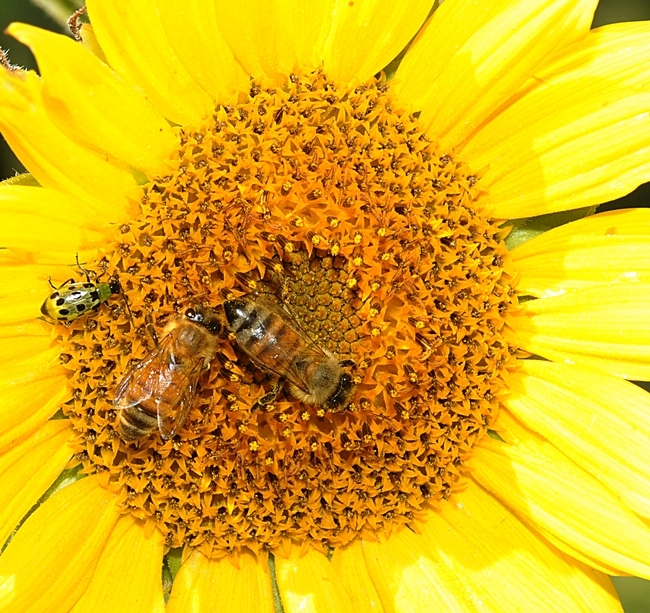
An 11-member team of researchers led by UC Davis scientists reveals insight on "how and why" in a newly published article in the journal New Phytologist.
The title, "Flower Orientation Influences Floral Temperature, Pollinator Visits and Plant Fitness," tells part of the research, headed by senior author Stacey Harmer, professor of plant biology, College of Biological Sciences.
"Sunflowers face the rising sun because increased morning warmth attracts more bees and also helps the plants reproduce more efficiently, according to a study by researchers at the University of California, Davis," wrote UC Davis science writer and public information representative Andy Fell in a news release.
"While sunflowers are growing, their heads turn back and forth to track the sun during the day," Fell related. "Previous work from Harmer's lab showed that this tracking is controlled by the plant's internal circadian clock."
Some excerpts from the UC Davis news story:
"...as the flower heads, or capitula, mature and their stems become stiff and woody, this movement decreases until the heads are all facing the morning sun. When postdoctoral researcher Nicky Creux changed the orientation of sunflowers by turning their pots around, she (Harmer) noticed that east-facing flower heads attracted a lot more bees, especially in the morning, than plants facing west."
"The orientation of the plants also affected flower development and reproductive success. East-facing plants tended to produce larger and heavier seeds. They also released pollen earlier in the morning, coinciding with the times when bees visit."
The team included scientists from the Harmer lab, as well as researchers from the University of Virginia and UC Berkeley.
The researchers summarized their work--funded by the National Science Foundation and the U.S. Department of Agriculture's National Institute of Food and Agriculture (USDA-NIFA)--with these four key points:
- Effective insect pollination requires appropriate responses to internal and external environmental cues in both the plant and the pollinator. Helianthus annuus, a highly outcrossing species, is marked for its uniform eastward orientation of mature pseudanthia, or capitula. Here we investigate how this orientation affects floral microclimate and the consequent effects on plant and pollinator interactions and reproductive fitness.
- We artificially manipulated sunflower capitulum orientation and temperature in both field and controlled conditions and assessed flower physiology, pollinator visits, seed traits and siring success.
- East-facing capitula were found to have earlier style elongation, pollen presentation and pollinator visits compared with capitula manipulated to face west. East-facing capitula also sired more offspring than west-facing capitula and under some conditions produced heavier and better-filled seeds. Local ambient temperature change on the capitulum was found to be a key factor regulating the timing of style elongation, pollen emergence and pollinator visits.
- These results indicate that eastward capitulum orientation helps to control daily rhythms in floral temperature, with direct consequences on the timing of style elongation and pollen emergence, pollinator visitation, and plant fitness.
You can read the entire paper here.
Harmer and Creux created a video that illustrates the research, basically "that bees prefer to visit east-facing sunflowers than sunflowers that have been turned to face west. East-facing sunflowers are warmer and release pollen earlier to coincide with bee visits." Access the YouTube video below.
Attached Images:
